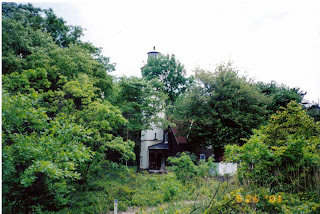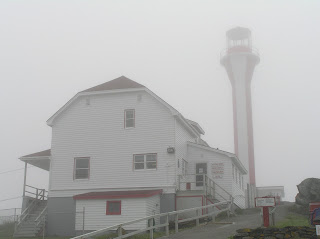Recently, Lori and I had the opoortunity to travel to Detroit, Michigan for a friend's wedding. While there, we decided to visit some local lighthouses along the Detroit River. With varying degrees of success, we managed to see two lighthouses and a replica of a third.
The first lighthouse we attempted to see was the Grosse Ile Lighthouse. We drove down to the Detroit River after the wedding reception in hopes of getting some night photographs with the lighthouse lit up. It would be a very romantic end to what had been a very lovely evening and we don't have too many nightime photos. Fenwick Island on the Delaware - Maryland border is the only one I can remember taking a picture of at nighttime. Unfortunately, the Grosse Ile Lighthouse sits on private land and is only open one day a year, the Saturday after Labor Day. I actually knew this, but had forgotten about it until after we returned to the hotel. We attempted to see the lighthouse from the street, but it was not possible. A residential area blocks the view and because it was getting dark, we didn't want to ask permission to see the lighthouse, lest the homeowners think we were some sort of burglars. We left disappointed.
On Sunday, on the way home, we drove along the Detroit River and visited two lighthouses and a third that turned out to be a replica of the Tawas Point Lighthouse. The replica does not appear to be an actual working lighthouse. Below are pictures of the three lighthouses.

Windmill Point located between Windmill Point Park and Riverfront Lakewood Park

William Livingstone Memorial Lighthouse on Belle Isle where the Detroit River meets Lake St. Clair.

Replica of Tawas Point Lighthouse located at the Tri-Centennial State Park Harbor

















